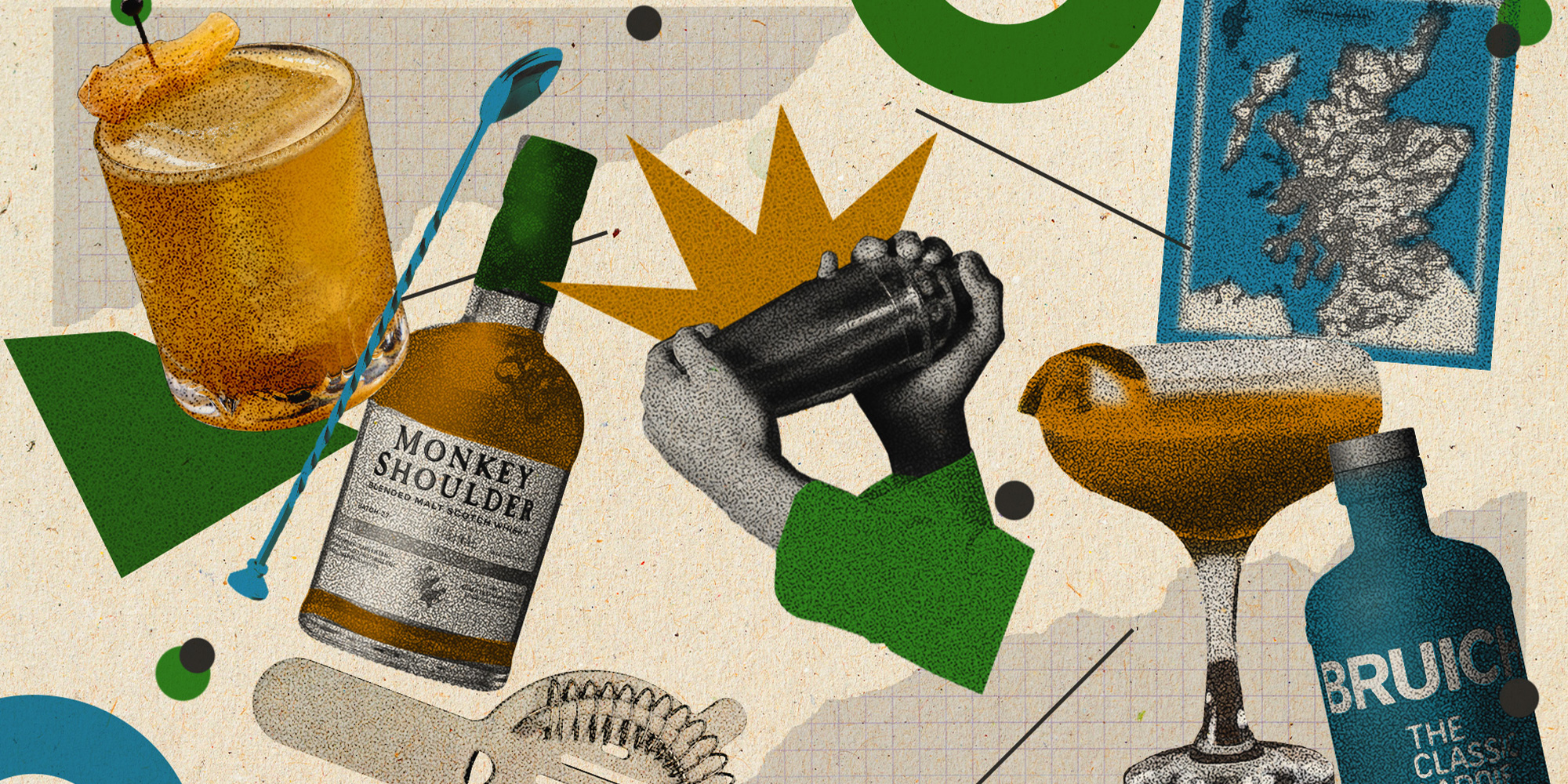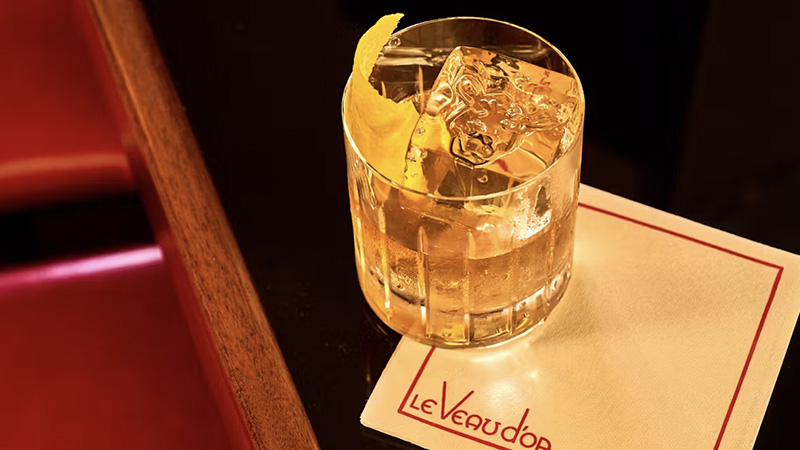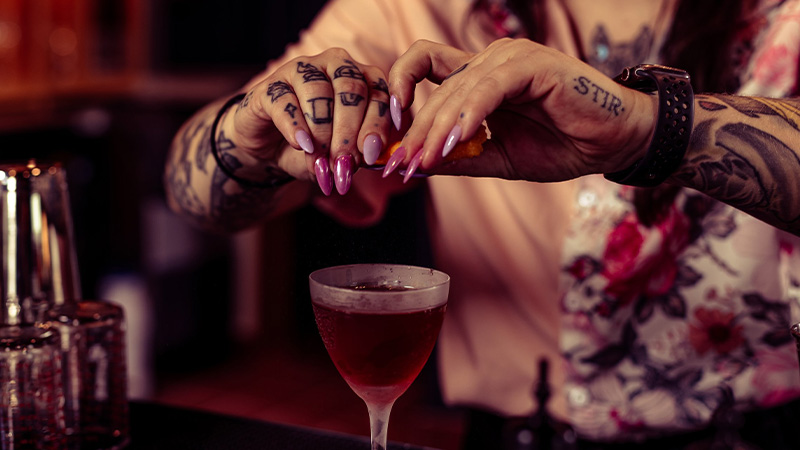


There’s a newish cocktail bar in Louisville, Ky., where the menu has a little bit of everything. There’s an Old Fashioned riff named Base Camp; the Straight Up, a spin on the Manhattan; a Whiskey Sour; and a modern classic cocktail, the Penicillin.
Nothing unusual there. That is, until you realize that all the above are made not with American whiskey — as you might expect from a bar in the heart of bourbon country — but Scotch.
The bar is Tartan House and it opened in the Butchertown neighborhood in August 2023. It is perhaps the boldest booze move the city’s drinking landscape has seen since Joe Heron decided to open brandy distillery Copper & Kings a decade ago. Tartan House carries dozens of bourbon brands, but it also stocks almost as many kinds of Scotch. By the end of 2024, the Scotch count will surpass its American sibling.
“It’s been going very, very well,” says co-owner Jeff Knott. “It is hard to drink bourbon all day. I love bourbon. But I think people love the change of pace and to think a little outside the box. The flavor profile of Scotch is so much broader than bourbon is, because the restrictions are a little different.”
Tartan House is not an anomaly. Scotch cocktails, once rarities on modern cocktail menus, have become more common sights in the last year or so. When Takuma Watanabe, an owner of Martiny’s in New York, opened his second bar, L’Americana, earlier this year, the house Manhattan — called the Hybrid Manhattan — contained a base of Maker’s Mark bourbon and Bowmore 12-year-old Scotch. Clemente Bar, the hot new lounge tucked inside Eleven Madison Park, has two Scotch cocktails on its opening menu. And at the classic French restaurant Le Veau d’Or, which reopened under new management last summer, beverage director Sarah Morrissey chose as her house long drink not the trendy Japanese whisky highballs found all around town, but a classic Scotch and Soda.

In Chicago, the vaunted Meadowlark is featuring two Scotch drinks on its new school-themed “Composition Book” menu. Nearby, at The Whistler, the current menu includes the Jimmy, made of blended Scotch, Calvados, Cardamaro, Sfumato Rabarboro and the Malort-like Besk. Speak of the Devil, a cocktail bar in Lorain, Ohio, currently has two Scotch drinks on the menu, including the Borsenik’s Law, where Monkey Shoulder blended Scotch is paired with Watershed Apple Brandy.
Until recently, the knock against using Scotch in cocktails was threefold: Strong-flavored Scotch didn’t play well with other spirits; Scotch was too expensive to mix with; and purist Scotch drinkers objected to their preferred spirit being combined with anything other than a glass, and maybe a chunk of ice.
The new generation of mixologists is not as rigid.
“The Papa John’s concept of ‘better ingredients, better pizza’ — why doesn’t that apply to alcohol?” asks Knott. “You shouldn’t be so restricted to the point where you can’t make a cocktail with certain ingredients because it’s too precious or too expensive. Nothing is sacred. The idea that single malts aren’t for mixing is BS. If you know how to balance a cocktail, you’re using a great base.”
“Scotch can be a bully and, if not used with respect, can take over in a drink. Like Chartreuse or allspice dram or Campari, how much and with what else you use it with is all so very important with bullies. But, if used with this kind of self-editing understanding, Scotch can be very versatile in cocktails.”
Kurt Hernon, co-owner of Speak of the Devil, has no trouble coming up with good Scotch cocktails, partly because of the quality of the new blends available on the market, like Monkey Shoulder and Glenmorangie X. The latter, a product put out three years ago specifically as a mixing Scotch, is a staple behind the bar at Tartan House.

“In the past I could see margins/cost being a factor that held back creativity as well as the reality that low-cost blended Scotch was generally much lower in flavor quality,” says Hernon. “To me, Monkey Shoulder changed that part of the equation. Products like this bring the cost of a quality Scotch cocktail into more reasonable territory.”
Porchlight, the Manhattan bar, uses Monkey Shoulder in its latest Scotch cocktail, Bull Fighter, a riff on the classic Blood and Sand. At Raines Law Room at The William, beverage director Meaghan Dorman uses the affordable Compass Box Glasgow Blend in the bar’s new Scotch drink, Vegas Stage, which also includes allspice dram, Ancho Reyes, cinnamon, naranjilla puree, and lime juice.
“I love the full body that Scotch has from the malted barley and aging process,” Dorman says. “It’s both bold and comforting at the same time. Scotches have a lot of personality to lend to a cocktail recipe that one can build off of.”
As for Scotch’s reputation as an aggressive spirit that overwhelms all other components in a drink, some bartenders find that judicious moderation solves that problem.
“Scotch can be a polarizing flavor. Using it as a modifier allows you to capture its rich and dynamic flavors while anchoring the cocktail with a more approachable base spirit, like bourbon.”
“Scotch can be a bully and, if not used with respect, can take over in a drink,” says Abe Vucekovich, beverage director at Meadowlark. “Like Chartreuse or allspice dram or Campari, how much and with what else you use it with is all so very important with bullies. But, if used with this kind of self-editing understanding, Scotch can be very versatile in cocktails.”
Leanne Favre, the consulting beverage director for Winona’s, a restaurant in the Bed-Stuy neighborhood of Brooklyn, agrees. In the house Old Fashioned, she pairs only a quarter-ounce of Bruichladdich The Classic Laddie with mushroom-infused bourbon, Pedro Ximenez sherry, and chocolate bitters.
“Scotch can be a polarizing flavor,” says Favre. “Using it as a modifier allows you to capture its rich and dynamic flavors while anchoring the cocktail with a more approachable base spirit, like Bourbon.”
Dorman thinks the American drinker’s ever-maturing palate is part of the reason for Scotch’s increasing presence on drinks menus.
“I used to find that in Scotch cocktails drinkers would sometimes ask for Bourbon instead, but that doesn’t happen much anymore,” she says. “Perhaps with mezcal, etc., folks are used to branching out into lesser-known spirits or they feel less tied to sticking to what they usually drink.”
The ascent of Scotch has also helped raise the profile of the few classic Scotch cocktails. Knott had a Bobby Burns on the opening menu at Tartan House, and he has plans to add a Rob Roy and Blood and Sand on future lists.
He was also going to introduce a Cameron’s Kick, a more obscure old drink made of Scotch, Irish whiskey, and orgeat, but his fiancée, bartender Lindsay Matteson, who works at the Louisville speakeasy Hell or High Water, beat him to it.
The article At Cocktail Bars Across the Country, Scotch Gets a New Lease On Life appeared first on VinePair.